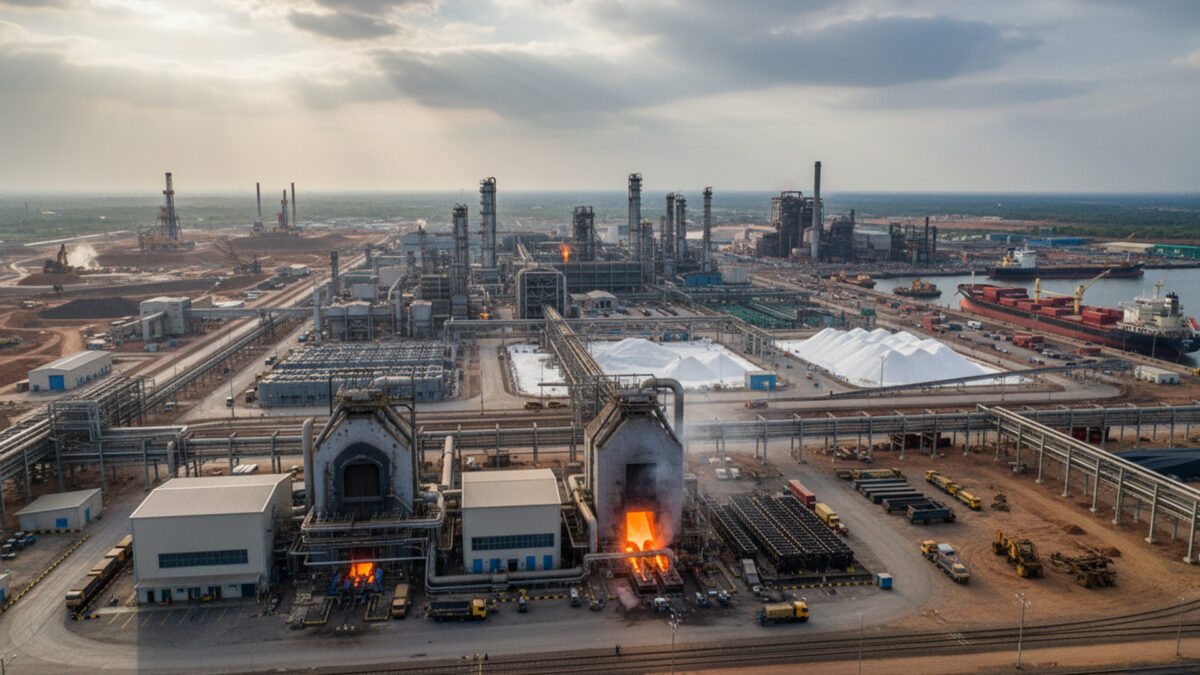Vedanta Ltd reported a string of operational highs in its second quarter for FY 2026, with key divisions such as aluminum, alumina, zinc and pig iron registering record outputs, even as other segments grappled with headwinds. The company’s performance underscores its push to scale capacity and improve productivity across its diversified metals and mining portfolio.
In the quarter ended September 30, 2025, Vedanta posted its highest ever aluminium output of 617 kt, while alumina production at its Lanjigarh refinery climbed to 653 kt — a sharp 31 percent year-on-year growth. These figures mark record quarterly and half-yearly highs for both aluminium and alumina, and reflect strong operational momentum in the upstream chain.
Alongside these gains, Vedanta’s zinc business also delivered standout results. Zinc India recorded its best ever mined metal production of 258 kt — up about 1 percent year-on-year — representing its most productive second quarter and first half. Zinc International fared even better, scaling mined metal output by nearly 38 percent to 60 kt, aided by higher milled tonnages and stronger lead grades.
In the iron and steel segment, the company achieved its highest quarterly pig iron production of 238 kt, an increase of 26 percent year-on-year, driven by successful debottlenecking efforts in its blast furnace operations. Billet production too rose steeply, climbing 43 percent to 232 kt.
However, not every division sustained the growth trajectory. Vedanta’s iron ore production fell by 19 percent to 1.1 million tonnes, a decline attributed to heavier rainfall and subdued demand in the construction sector. Oil and gas posted a 15 percent year-on-year dip, with average daily gross operated production falling to 89.3 kboepd, partly on account of softer output from the Rajasthan block. Steel finished product output also slipped about 8 percent, though its billet segment showed strength.
On the energy front, Vedanta reported its power sales fell 2 percent year-on-year to 4,331 million units, while in the metals basket, copper production saw a modest 3 percent decline, affected by raw material sourcing issues. Lead and silver production also lagged due to disruptions in pyro-plant availability and weaker feed grades.
Vedanta’s Q2 results highlight a deliberate strategy to lean into its most scalable, higher-margin segments even as its more volatile verticals face pressures. While the aluminium and zinc divisions are benefiting from robust global prices and improved efficiencies, sustaining output gains across iron ore, oil & gas and downstream metals will be the true test. The company also continues to pursue capacity expansions — notably in aluminum — backed by plans to invest heavily to scale to 3.1 million tonne capacity by FY28.
Market reaction to the production release was broadly positive. The strength in core metals helped buoy investor sentiment despite challenges in complementary areas. For Vedanta, the current performance underscores both the promise and the volatility of a multi-asset natural resources conglomerate: the ability to post fresh records in key verticals even as ancillary operations reset amid cyclical and structural shifts.
As the company heads into the second half of FY26, the emphasis will likely be on translating capacity gains into improved margins, and steering the weaker segments toward recovery, all while managing external risks such as input cost volatility, weather disruptions and demand fluctuations in global commodity markets.
Also Read: Moody’s Downgrades Tata Motors’ Outlook Amid JLR Cyberattack Fallout
